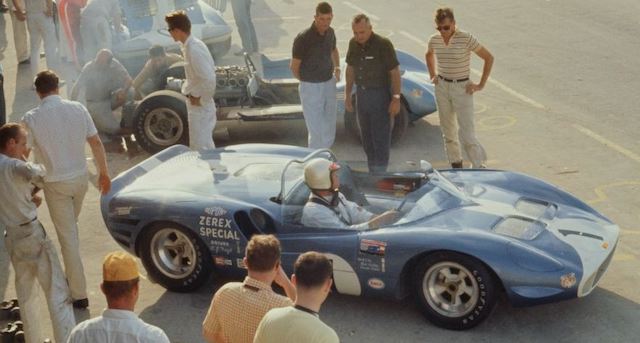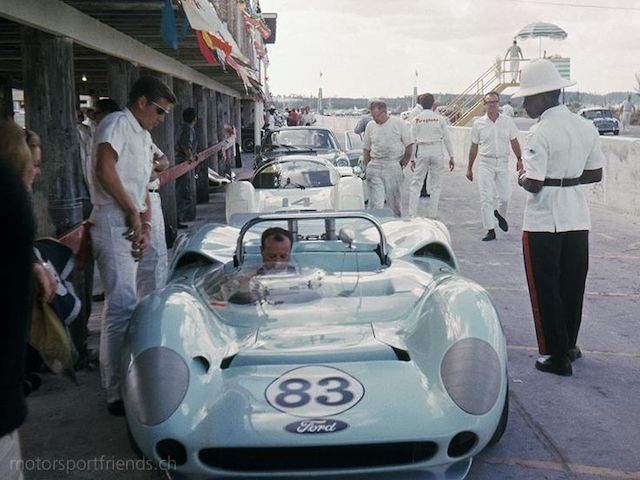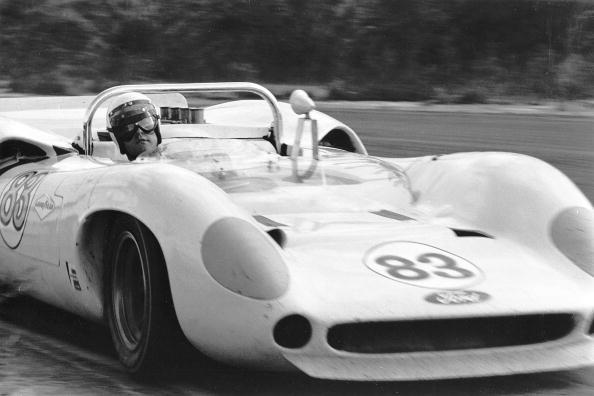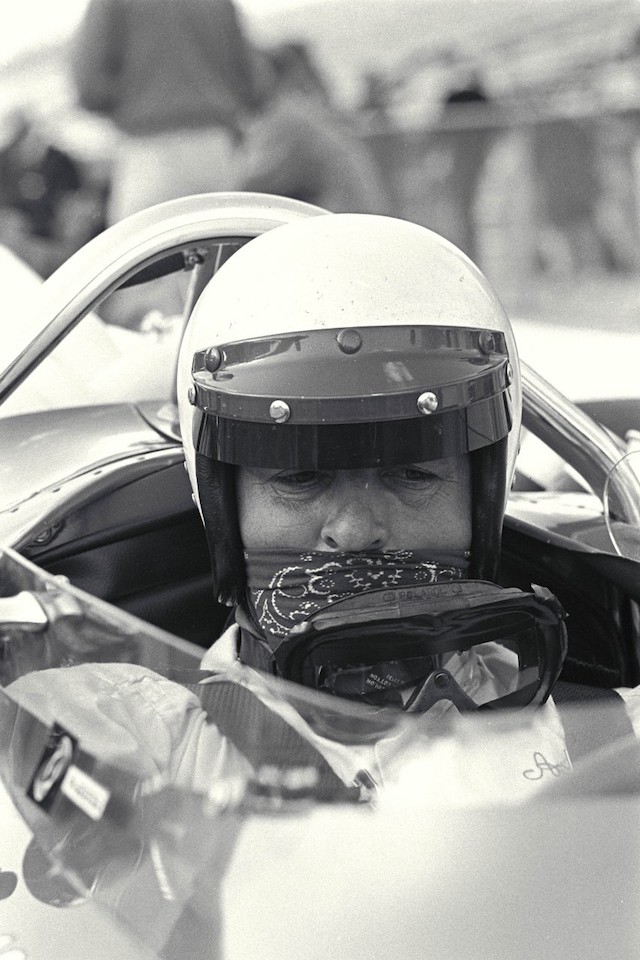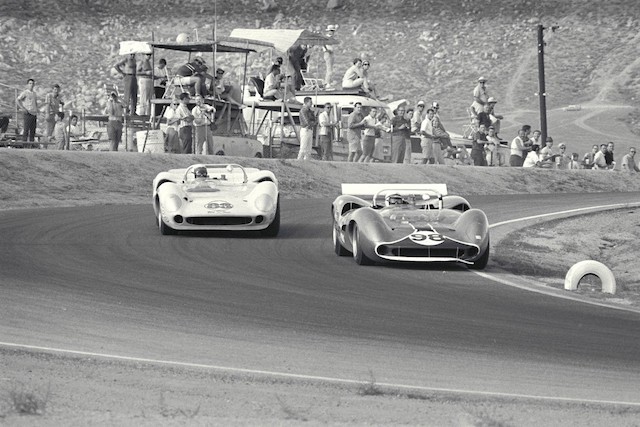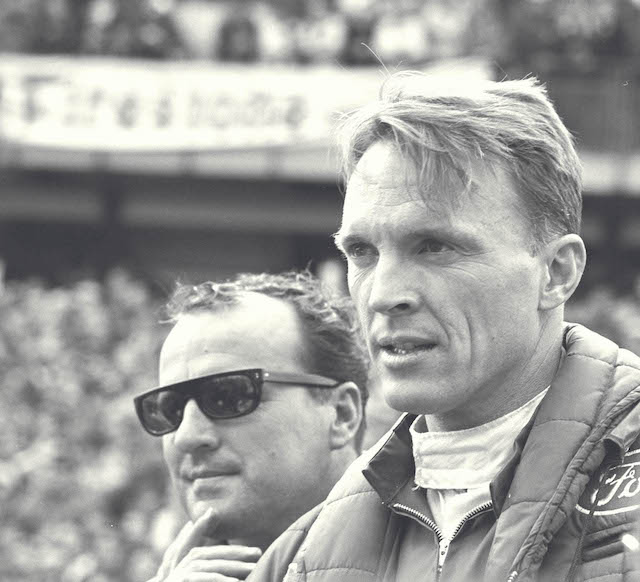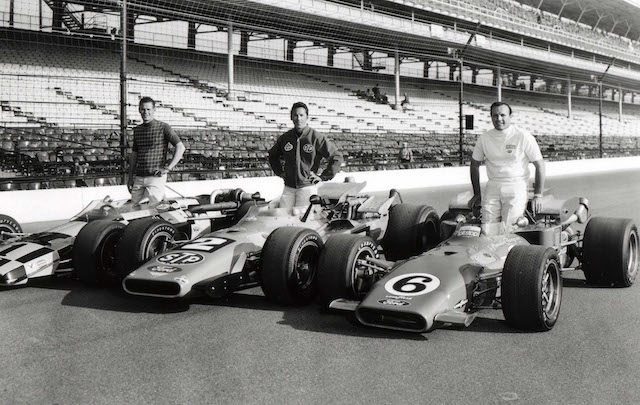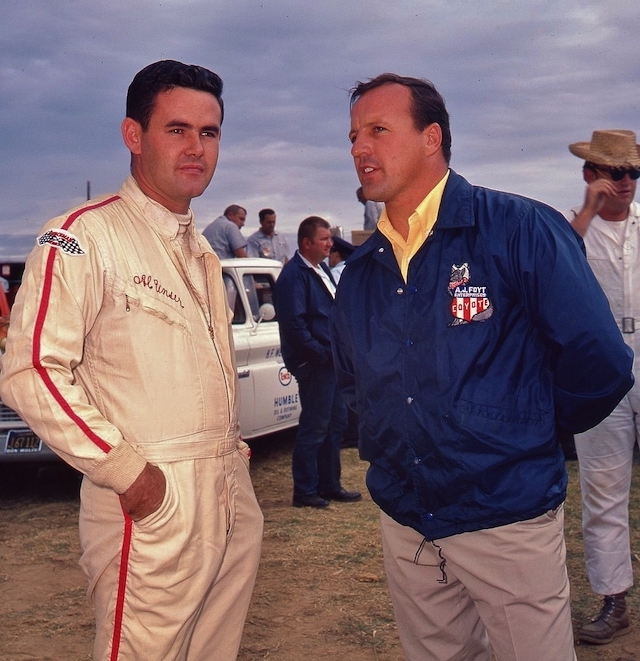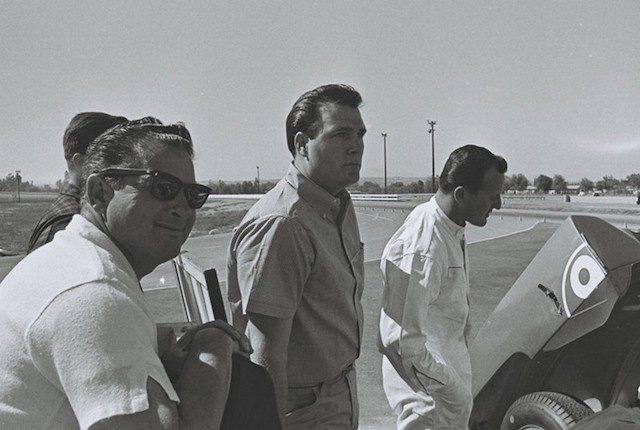By Peter M. DeLorenzo
Detroit. Racing a car, motorcycle or anything with some sort of power is a pursuit like no other. It is a passionate endeavor requiring an obsessive single-mindedness that consumes the people involved to a degree that outsiders find hard to understand. Ask any driver who has competed at the top level, and they will tell you that there is nothing half-assed about what they do, because the focus required is almost incomprehensible. Drivers talk about being in "the zone" - a strange state of mind that takes over their entire being while they're racing - when the faster they go the more things seem to slow down for them. They're aware of everything around them, but at the same time their focus on the task at hand is impenetrable, because anything less can result in a mistake that will likely have severe consequences. Racers are indeed a rare breed, willing to sacrifice everything for the pursuit of what they love to do, to the detriment of everything else. These racers have left an indelible mark on the sport. Drivers who were fierce competitors, flawed heroes and incredible, gifted talents. Their legacies are what make the sport of motor racing so fascinating. In the next few issues of "Fumes" I will recall some of my favorites. This week, we remember one of America's greatest drivers - A.J. Foyt.
If there were a Mount Rushmore of American drivers, Anthony Joseph Foyt Jr. would certainly be on it. A tenacious competitor, "A.J." won in every racing series he entered. He raced - and won - in USAC Champ cars, stock cars, sprint cars and midget cars. He raced - and won - in NASCAR and in major league sports car racing. He registered 159 career victories in USAC competition, and he still holds the record for Indy car wins with 67. A.J. remains the only driver to have won the Indianapolis 500 (one of four drivers to win it four times, along with Al Unser, Rick Mears and Helio Castroneves), the Daytona 500 (1972), the 24 Hours of Le Mans (1967) and the Daytona 24 Hours (1985). Foyt also won the IROC series in 1976 and 1977. Foyt's success has led to induction in numerous motorsports halls of fame. In the mid-sixties, Foyt become a team owner, fielding cars for himself and other drivers. Since retiring from active race driving, he has owned A. J. Foyt Enterprises, which has fielded teams in the IRL, CART, NASCAR and INDYCAR. A.J. is simply one of the greatest talents to ever get behind the wheel.
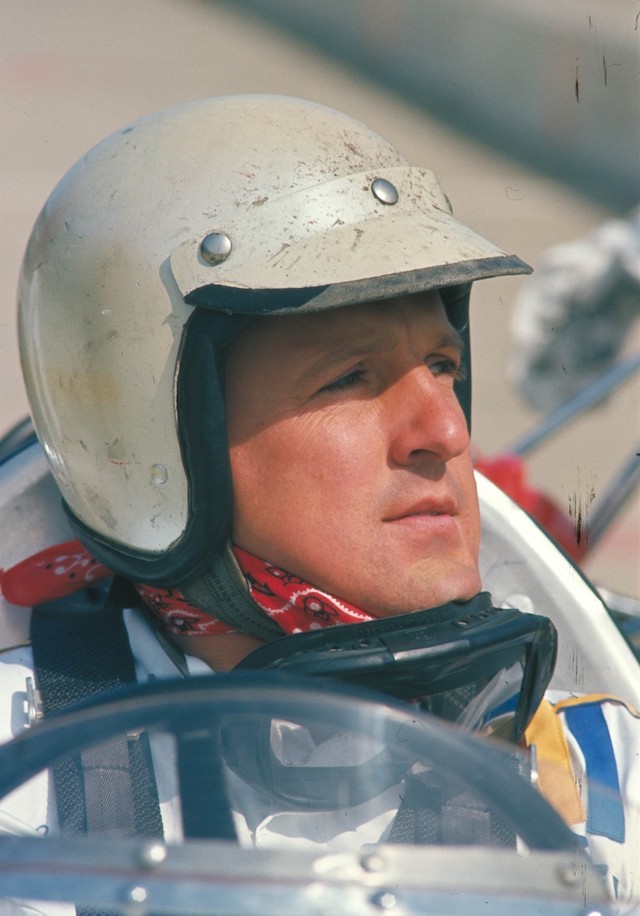 (IMS)
(IMS)
A.J. Foyt Jr. has always said that the Indianapolis Motor Speedway and the Indy 500 "made" him, but you could argue that A.J. contributed mightily to "The Greatest Spectacle in Racing" all on his own.
(Getty images)
A.J. Foyt never shied away from driving anything, especially when it came to road racing with fellow Texan and owner John Mecom. Here he is at the 1964 Nassau Speed Weeks, competing in the No. 1 Mecom Racing Team Hussein 1 Dodge. He finished second in the Governor's Trophy feature race to Roger Penske (No. 6 Chaparral 2A Chevrolet). Walt Hansgen (No. 2 Mecom Racing Team Scarab Mk IV Chevrolet) finished third.
(Getty images)
Nassau Speed Weeks, December, 1966. A.J. Foyt was again entered in the Governor's Trophy race in his No. 83 Lola T70 Mk.2 Ford.
(Getty images)
Nassau Speed Weeks, December, 1966. A.J. at speed in the No. 83 Lola T70 Mk.2 Ford. He withdrew the car from the Governor's Trophy race, but won the 4-lap Nassau Classic sprint race. Mark Donohue (No. 7 Roger Penske Lola Mk.2 Chevrolet) finished second. In the Nassau Trophy feature, A.J. didn't finish. That race was won by Mark Donohue (No. 7 Roger Penske Lola Mk.2 Chevrolet), followed by Skip Scott (No. 91 McLaren Elva Mark II Ford) and Peter Revson (No. 92 McLaren Elva Mark II Ford).
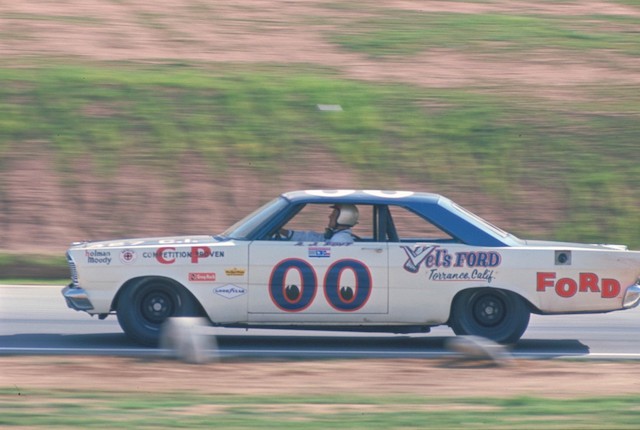
(Dave Friedman)
Motor Trend 500 NASCAR race, Riverside International Raceway, January 17, 1965. A. J. Foyt was entered in the No. 00 Holman & Moody Vel's Ford, but the race was won by Dan Gurney (No. 121 Wood Brothers Racing Ford) in another one of his dominating NASCAR performances at Riverside. A. J. suffered one of the most devastating crashes of his career when his brakes failed near the end of the race, and in trying to avoid Junior Johnson (No. 27 Ford) and Marvin Panch (No. 21 Wood Brothers Racing Ford), he moved his car off of the race track and ended up going down a 25-foot embankment, which caused his car to flip and roll wildly, breaking his back and fracturing his ankle. By the time the medics, Parnelli Jones and a team owner reached the crash scene, Foyt was not breathing and had turned blue, and the doctors at the scene pronounced him dead. But Parnelli noticed some movement by A.J. and proceeded to scoop dirt out of his mouth, which allowed him to start breathing. After a stint in the hospital, A. J. made a complete recovery and qualified on the pole for the Indy 500 the following May. He dropped out of the race with mechanical issues, finishing fifteenth, but in July he would win the Firecracker 400 NASCAR race at Daytona. Watch the Riverside crash here.
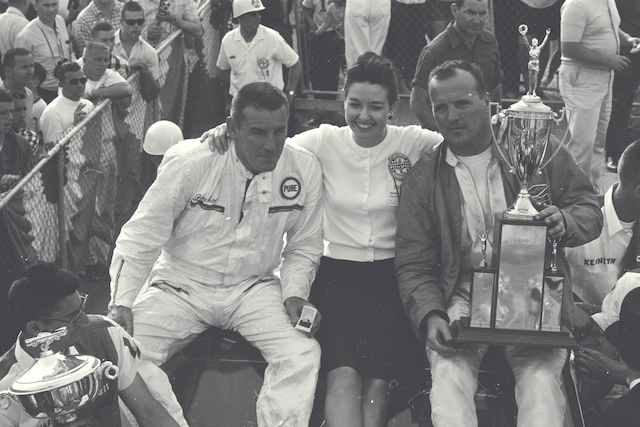
(Getty images)
Atlanta 500, Atlanta Motor Speedway, April 11, 1965. Marvin Panch and A.J. Foyt in Victory Lane after A. J. took over Panch's No. 21 Wood Brothers Ford in relief and went on to the win. Panch was credited with the win and the points according to NASCAR rules at the time.
(Getty images)
Cantankerous, hot-tempered and mechanically gifted, A. J.'s tantrums in the pits at The Speedway were legendary when things went wrong, but A. J. could drive the wheels off of any racing car he was entered in and there is no doubt he is one of the all-time greats of motorsport.
(Dave Friedman)
Riverside International Raceway, October 30, 1966. Parnelli Jones (No. 98 John Mecom Racing Lola T70 Mk.2 Ford) and A. J. Foyt (No. 83 Lola T70 Mk.2 Ford) battle it out in the Can-Am. Both drivers started at the back of the grid and both DNF. The race was won by John Surtees (No. 7 Team Surtees Lola T70 Mk.2 Chevrolet), followed by Jim Hall (No. 66 Chaparral 2E Chevrolet) and Graham Hill (No. 3 Team Surtees Lola T70 Mk.2 Chevrolet).
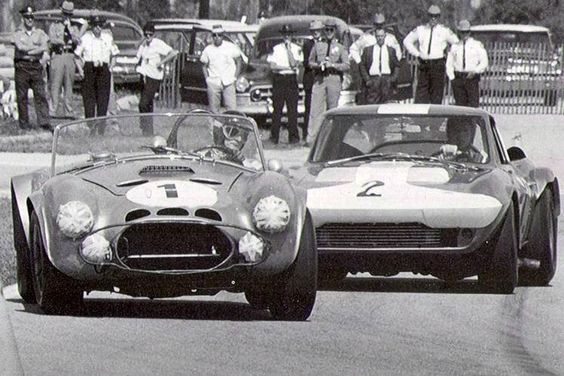
(Dave Friedman)
12 Hours of Sebring, March 21, 1964. Ken Miles (No. 1 Shelby American 427 Cobra prototype) and A. J. Foyt (No. 2 Mecom Racing Team Chevrolet Corvette Grand Sport) during the race. Miles' 427 Cobra prototype was his pet project designed to go up against the Grand Sports, after the Cobras were humiliated at Nassau the previous December. And although the 427 Cobra was blistering fast, Miles crashed heavily in practice, and he and co-driver John Morton had to start from the back of the grid after the car was hastily rebuilt for the race. The 427 Cobra didn't finish, and the Foyt/John Cannon Grand Sport encountered myriad problems to finish 23rd, but for a brief fleeting moment, the racing enthusiasts present were treated to a spectacular duel.
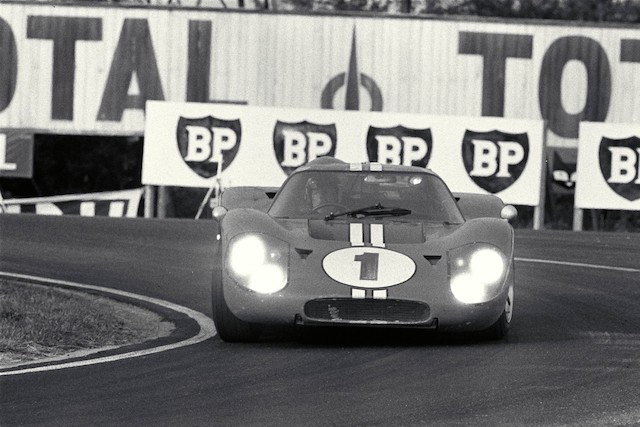
(Dave Friedman)
Le Mans, France, June 1967. Dan Gurney and A. J. Foyt (pictured) won the 24 Hours of Le Mans, delivering a momentous All-American victory in their No. 1 Shelby American Ford Mk. IV. The European racing press scoffed at the notion that Gurney and the mercurial Foyt even had a chance to run up front, but they proved the doubters wrong. Gurney had devised a brilliant race strategy that allowed the duo to run quick enough while going the distance, and Foyt followed it to the letter. The Gurney/Foyt 427 Ford Mk. IV took over the lead after the first 90 minutes of the race, and went on to win by four laps.
(Dave Friedman)
Le Mans, France, June 1967. A. J. and Dan proved their critics in the foreign media dead wrong about the duo's prospects for the 24 Hours of Le Mans. The Americans won the race going away. It remains one of the most glorious days in American racing history.
(IMS)
Indianapolis Motor Speedway, May 1969. The Front Row for that year's Indy 500 included A. J. Foyt (No. 6 Sheraton-Thompson Coyote Ford) with a pole speed of 170.568 mph, Mario Andretti (No. 2 STP Oil Treatment Hawk III Ford), although that's not Mario, that's his twin brother Aldo filling in for him at the shoot after Mario suffered facial burns in a crash during practice, and Bobby Unser (No. 1 Bardahl Lola/Offy). A. J. finished eighth that race day (May 31), Bobby was third, Dan Gurney (No. 48 All American Racers Olsonite Eagle-Weslake Ford) finished second, and of course, Mario won his first and only Indianapolis 500 that day.
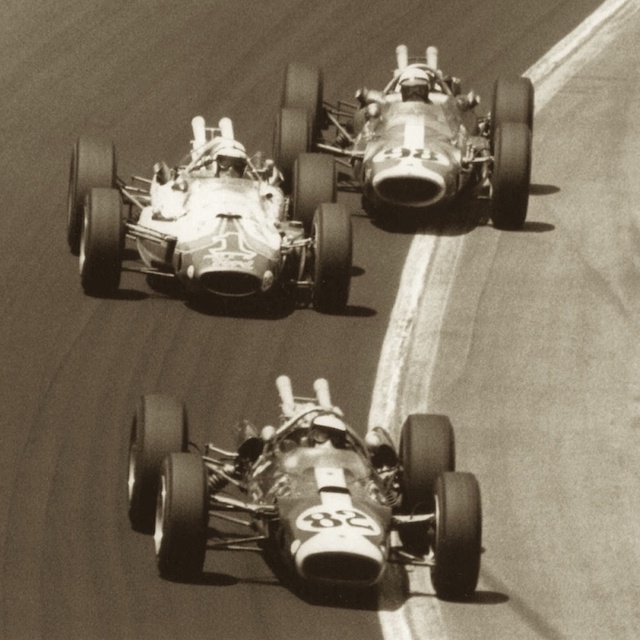
(Getty images)
Indianapolis Motor Speedway, May 31, 1965. Talk about a photograph defining an era, Jim Clark (No. 82 Lotus/Ford) leads A. J. Foyt (No. 1 Sheraton-Thompson Lotus/Ford) and Parnelli Jones (No. 98 Agajanian/Hurst Kuzma Lotus/Ford) during the Indy 500. Clark would dominate the race that day, leading 190 of the 200 laps in a win that would change The Speedway forever. Parnelli finished second and A. J. didn't finish due to gearbox failure.
(Getty images)
Al Unser and A. J. Foyt - two of America's best - back in the day.
(Getty images)
Riverside International Raceway. Two-time Indy 500 ('59 and '62) winner Rodger Ward, John Mecom and A. J. Foyt during pre-race testing for the 1963 L.A. Times Grand Prix for Sports Cars. Ward would drive the No. 1 Nickey Chevrolet Cooper Monaco T61M Chevrolet in the race but did not finish. Mecom entered cars for Roger Penske (No. 6 Zerex Special Cooper Climax) and A. J. Foyt (No. 9 Scarab Mk IV Oldsmobile). The race was won by Dave MacDonald (No. 98 Shelby American Cooper King Cobra Ford), with Penske second and Pedro Rodriguez (No. 166 Kjell Qvalle Genie Mk.8 Ford) finishing third. A. J. didn't finish.
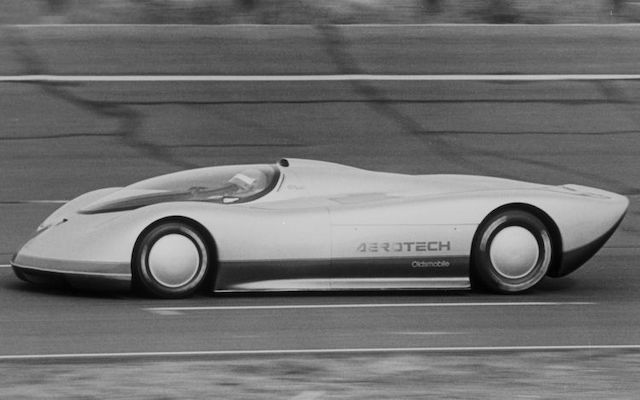
(Getty images)
Four-time Indy 500 winner A. J. Foyt set a world closed-course speed record of 257.123 mph (413.788 km/h) on August 27, 1987, at the 7.712-mile (12.411 km) test track near Fort Stockton, Texas, driving an experimental General Motors prototype - the Oldsmobile Aerotech. The machine was designed from the outset to incorporate the latest performance technology with the intention of breaking multiple speed records, and its underpinnings were based on a March Engineering 85C CART Indy car tub. The bodywork was designed by former GM Design Chief, Ed Wellburn and his team, and it turned out to be one of Ed's proudest career momernts. Prior to this, on August 26, 1987, the car had posted a top speed over a mile of 267.88 mph (431.10 km/h). When A. J. tested the second, long-tail version of the car, it proved to be even more capable than its short-tail sibling and allowed Foyt to attain a top speed of 275 mph (443 km/h) at the flying mile after some practice runs. Remember, this machine was powered by a Twin-Turbo, 2.3-liter Quad 4 built by Batten Engineering in cooperation with Fueling Engineering that developed in excess of 1,000HP. The next day, Foyt set a new speed record with the long-tail version, averaging 267.399 mph (430.337 km/h) after flying-mile runs in both directions of the track. The runs made with the now-improved short-tail version, shortly after, resulted in the new closed-course speed record of 257.123 mph (413.799 km/h), beating a record previously held by the Mercedes-Benz CIII-IV prototype.
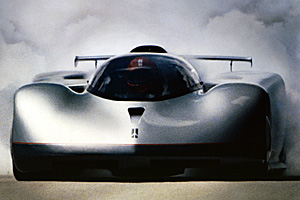
(General Motors)
Editor's Note: Click on "Next 1 Entries" at the bottom of this page to see previous issues. - WG
 Sunday, April 28, 2024 at 09:25AM
Sunday, April 28, 2024 at 09:25AM  (IMS)
(IMS)